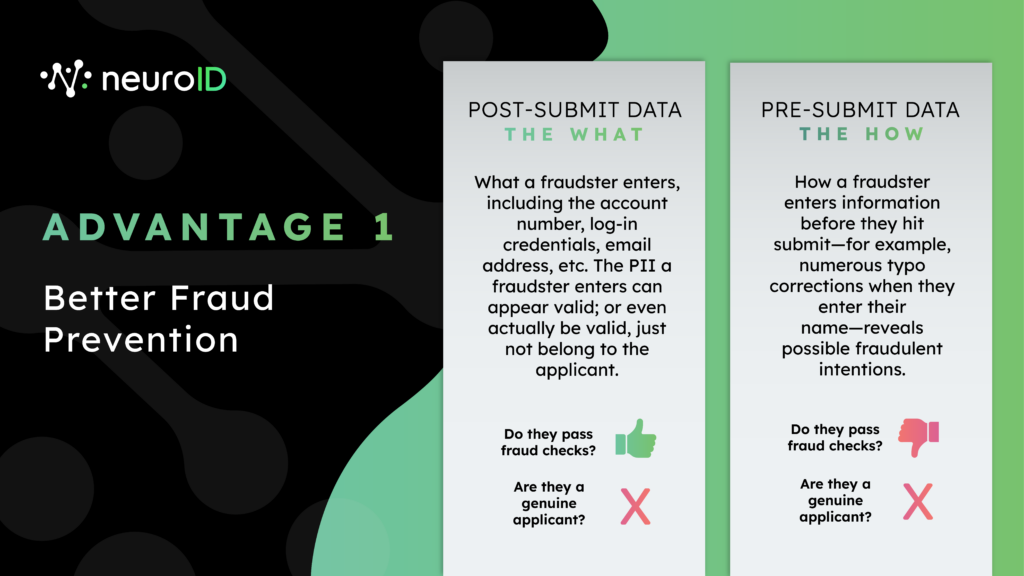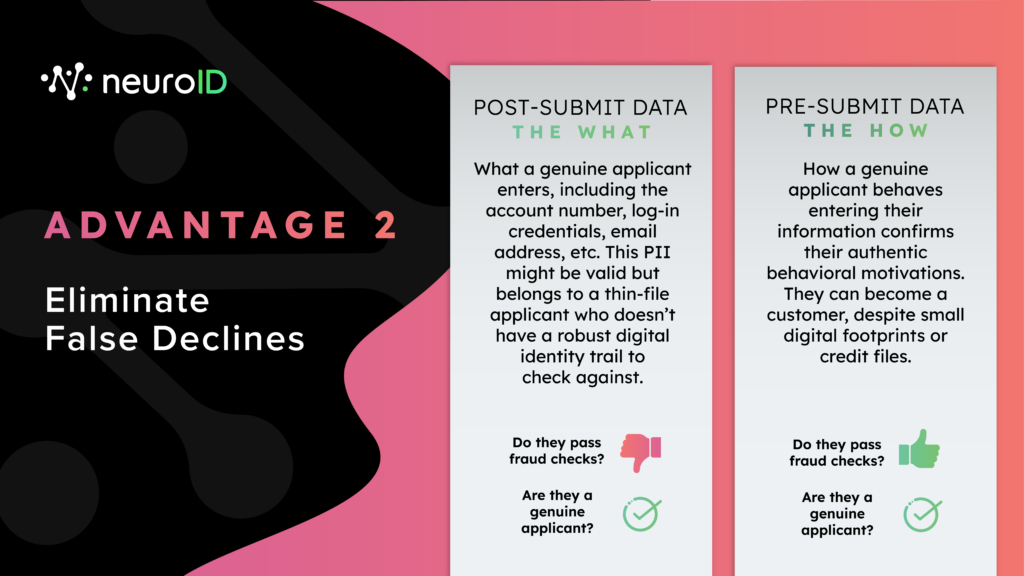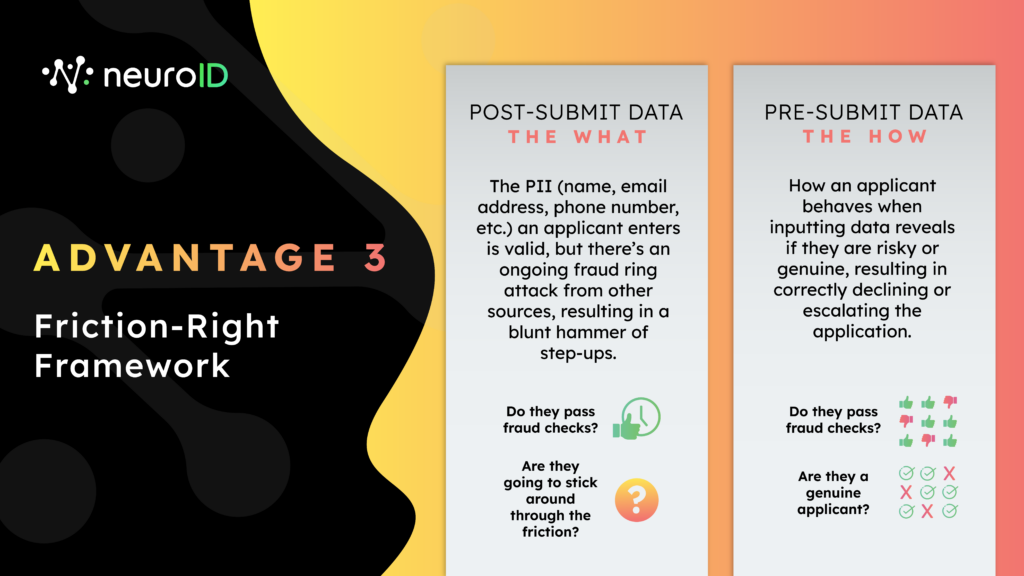
Pre-Submit vs. Post-Submit Data: The Pros & Cons & Why It Matters
Personally Identifiable Information (PII) is the cornerstone of post-submit data, which is what the vast majority of online organizations rely on to establish digital identity. But PII has become notoriously unreliable. An untold number of data breaches, hacks, phishing attacks, and ransomware have created a dirty well of polluted PII that is easily and cheaply exploited by solo fraudsters and sophisticated fraud rings alike (got $1? You can buy granny’s Social Security Number on the Dark Web!).
On the other hand, pre-submit data—which is built on the digital body language of taps, keystrokes, swipes, backspaces, pastes, tabs, clicks, etc. as users complete online forms—reveals authenticity (or inauthenticity), malicious intent, fraudulent behavior (from one person or a fraud ring), bot likelihood, and more with startling accuracy. This gives pre-submit data astonishing predictive and analytical power that delivers huge advantages at the top of any fraud stack.
The best way to think about it at the high-level is that post-submit data = “The What.” It’s the information that applicants input as their PII, such as physical addresses, emails, etc. It’s what most consortium-based fraud solutions use to check identities against.
Meanwhile, pre-submit data = “The How.” It’s not what applicants put into their online applications, it’s how they put it in and their demonstrated familiarity with the PII they’re claiming as their own. For example, high-familiarity behavior indicates they are likely valid and genuine. Unfamiliarity behavior markers means they might not be who they say they are, and are more likely risky or fraudulent. Using the “how” behavior as part of fraud prevention ensures alignment between whether or not applicants pass fraud checks and if they should pass fraud checks.
There are some very distinct advantages to a pre-submit approach for identity screening and fraud prevention. Let’s break it down . . .
Advantage 1:
Better Fraud Prevention
Because pre-submit data sits at the top of a fraud stack, before a user hits submit, it is key to fighting the Digital Identity Crisis created by fraudsters relying on legit PII that doesn’t belong to them, but that is verified by post-submit identity checks. This is especially dangerous in today’s age of sophisticated fraud rings, which are on the rise and a favorite tactic of aggressive cybergangs.

Advantage 2:
Elimination of False Decline
Pre-submit data also provides unprecedented gains when it comes to the holy grail of customer experience and conversion.
After decades of development and billions spent on ecommerce platforms, payment systems, CRMs, marketing automations, and more, many digital industries are still mired in single-digit percentage conversion rates.
But pre-submit data offers game-changing insights to eliminate the friction that strangles conversions and frustrates applicants. For example, when one of our customers analyzed their conversion success using pre-submit data, they discovered that 21% of the people they declined actually showed the same signals as a genuine customer.
They declined those customers. That’s lost revenue that will never come back.

Advantage 3:
Friction-Right Framework
ou don’t want an identity verification process with no friction: that means an open door to fraudsters. But post-submit friction is often a blunt-force locking of your virtual business ‘door’ to both genuine and fraudulent applicants alike. This approach puts every customer through the same verification process, essentially treating all prospects as cybercriminals. And you will catch the cybercriminals; but you will also hurt your authentic applicant conversion (and often you don’t catch all the fraudsters, anyway).
Friction-right, pre-submit insights enable you to vary the friction levels based on perceived riskiness from pre-submit insights. Instead of taking authentic users through an extremely time-consuming verification process, and hope they hang on throughout it all, you can give them the right levels for their risk. On the other end of the spectrum, you can introduce more friction to users perceived as risky, increasing the odds that they will self-eliminate before completing the process.

The Power of Pre-Submit
The best way to learn about the benefits of a pre-submit approach? Schedule a demo to ask questions and see how Neuro-ID is improving the customer experience, increasing conversion rates, reducing online fraud, preventing false positives, and solving for some of the most sophisticated and evolving fraud tactics out there.



